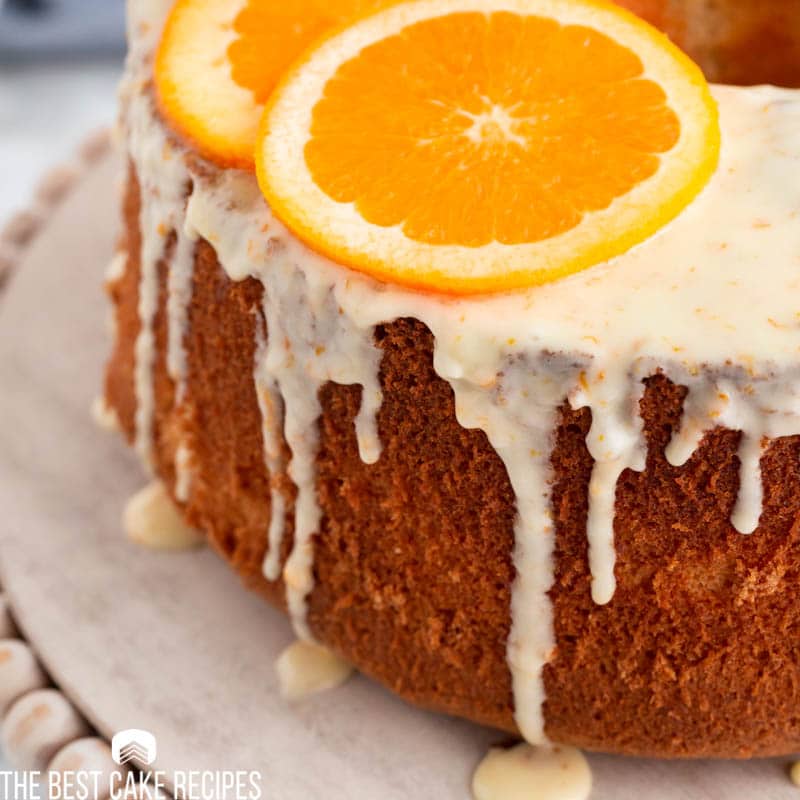Indulge in the tantalizing world of baking with our exquisite orange chiffon recipe. This light and fluffy cake, bursting with vibrant citrus flavors, is a true culinary masterpiece. Whether you’re a seasoned baker or a novice in the kitchen, our step-by-step guide will empower you to create this delectable treat with ease.
The orange chiffon cake, with its ethereal texture and refreshing taste, has captivated taste buds around the globe. Its origins can be traced back to the early 20th century, where it emerged as a beloved dessert in the United States.
Over the years, this classic recipe has undergone various adaptations, incorporating unique flavors and variations that cater to diverse preferences.
Ingredients

Gather the essential ingredients to craft a delectable orange chiffon:
Flour: 1 cup (120g) of all-purpose flour, sifted.
Sugar: 1 cup (200g) of granulated sugar.
Baking powder: 2 teaspoons (10g) of baking powder.
Salt: 1/4 teaspoon (1g) of salt.
Eggs: 4 large eggs, separated.
Orange zest: 1 tablespoon (5g) of finely grated orange zest.
Orange juice: 1/2 cup (120ml) of freshly squeezed orange juice.
Vegetable oil: 1/4 cup (60ml) of vegetable oil.
Vanilla extract: 1 teaspoon (5ml) of vanilla extract.
Cream of tartar: 1/4 teaspoon (1g) of cream of tartar (for egg whites).
Equipment
The preparation of an orange chiffon cake necessitates a collection of essential equipment. These tools play a crucial role in ensuring the successful execution of the recipe.
Mixing Bowls
Mixing bowls serve as the primary vessels for combining the ingredients. Choose bowls with sufficient capacity to accommodate the volume of the batter without overflowing.
Measuring Cups and Spoons
Precise measurement is paramount in baking. Utilize standardized measuring cups and spoons to ensure accurate proportions of ingredients, contributing to the cake’s optimal texture and flavor.
Electric Mixer
An electric mixer is indispensable for achieving the light and airy texture characteristic of chiffon cakes. It efficiently incorporates air into the batter, resulting in a fluffy and tender crumb.
Baking Pan
Select a baking pan specifically designed for chiffon cakes. These pans feature a removable bottom, facilitating the easy removal of the delicate cake without damaging its structure.
Step-by-Step s
Creating an exquisite orange chiffon cake involves a series of precise s, each contributing to the ethereal texture and vibrant flavor of the final product. By following these s meticulously, you can recreate this culinary masterpiece in your own kitchen.
Preparing the Batter
Begin by whisking together the dry ingredients – flour, sugar, baking powder, and salt – in a large bowl. In a separate bowl, whisk together the wet ingredients – egg yolks, orange juice, orange zest, and vegetable oil.
Gradually add the wet ingredients to the dry ingredients, mixing until just combined. Avoid overmixing, as this can result in a tough cake.
Beating the Egg Whites
In a clean bowl, beat the egg whites until stiff peaks form. Gently fold the beaten egg whites into the batter, taking care not to deflate them. The batter should be light and airy.
Baking the Cake
Pour the batter into a prepared 10-inch chiffon cake pan. Bake in a preheated oven at 350°F (175°C) for 50-60 minutes, or until a toothpick inserted into the center comes out clean. Allow the cake to cool in the pan for 10 minutes before inverting it onto a wire rack to cool completely.
Variations
The classic orange chiffon recipe is a versatile base that can be customized to create a variety of delicious desserts.
Experiment with different flavors, fillings, and toppings to create unique and personalized treats.
Flavor Variations
- Substitute the orange juice and zest for other citrus fruits, such as lemon, lime, or grapefruit.
- Add extracts or spices, such as vanilla, almond, or cinnamon, to enhance the flavor.
- Incorporate fresh or dried fruit, such as berries, bananas, or pineapple, for a fruity twist.
Filling Variations
- Spread a layer of whipped cream, pudding, or fruit compote between the chiffon layers.
- Pipe in a filling of chocolate ganache, caramel sauce, or cream cheese frosting.
- Create a layered dessert by alternating chiffon layers with fillings of different flavors.
Topping Variations
- Dust the top of the chiffon with powdered sugar or cocoa powder.
- Garnish with fresh fruit, whipped cream, or chocolate shavings.
- Drizzle a glaze made from fruit juice, honey, or melted chocolate over the top.
Dietary Adaptations
- Gluten-free: Use gluten-free flour or a blend of almond flour and tapioca flour.
- Vegan: Replace the eggs with a combination of flaxseed meal and water or a commercial egg replacer.
- Sugar-free: Use a sugar substitute, such as erythritol or stevia, in place of the granulated sugar.
Troubleshooting
Baking an orange chiffon cake can be a delightful experience, but it’s not without its potential pitfalls. Let’s address some common issues and provide solutions to ensure a successful baking endeavor.
Dense or Dry Cake
- Overmixing the batter: Overmixing can develop the gluten in the flour, resulting in a tough and dense cake. Mix the batter only until the ingredients are combined.
- Insufficient egg whites: Egg whites are crucial for the cake’s lightness and volume. Ensure you use the correct amount and beat them until stiff peaks form.
- Incorrect oven temperature: An oven that is too hot can cause the cake to rise too quickly and collapse, leading to a dense texture. Calibrate your oven regularly and bake the cake at the recommended temperature.
Cake that Falls
- Undercooked cake: Insert a toothpick or skewer into the center of the cake. If it comes out clean, the cake is done. Baking for an insufficient time can result in a cake that falls.
- Opening the oven door too soon: Resist the temptation to open the oven door during baking, as this can cause the cake to deflate.
Cake that Sticks to the Pan
- Insufficient greasing and flouring: Generously grease and flour the pan to prevent the cake from sticking. Use a non-stick spray or a combination of butter and flour.
- Cake not fully cooled: Allow the cake to cool completely in the pan before inverting it onto a wire rack. Attempting to remove it while warm can cause it to break.
Presentation
The presentation of your orange chiffon cake is just as important as its taste. Here are a few tips for making your cake look as good as it tastes:
To enhance the visual appeal of your orange chiffon cake, consider incorporating the following decorative elements:
Garnishes and Decorations
- Fresh orange slices: Arrange thin slices of fresh orange around the perimeter of the cake, creating a vibrant and refreshing border.
- Candied orange peel: Scatter pieces of candied orange peel over the top of the cake, adding a touch of sweetness and texture.
- Whipped cream or frosting: Pipe swirls of whipped cream or frosting onto the cake, creating a delicate and elegant touch.
- Edible flowers: Adorn the cake with edible flowers, such as pansies or violets, for a touch of natural beauty.
- Sprinkles or colored sugar: Sprinkle colorful sprinkles or colored sugar over the cake for a festive and playful look.
Serving Techniques
- Slice it thin: Cut the cake into thin slices to showcase its delicate layers and airy texture.
- Serve with fresh fruit: Accompany the cake with fresh fruit, such as berries or orange segments, to create a refreshing and flavorful dessert.
- Dust with powdered sugar: Lightly dust the cake with powdered sugar before serving to give it an elegant and sophisticated finish.
Nutritional Information
Understanding the nutritional content of a food item is crucial for making informed dietary choices. Let’s delve into the nutritional composition of a serving of orange chiffon cake.
On average, a serving (approximately 1/12th of a 9-inch cake) of orange chiffon cake contains the following:
Calories
A serving of orange chiffon cake typically provides around 250-300 calories. These calories primarily come from carbohydrates and fats.
Fat
Orange chiffon cake contains a moderate amount of fat, around 10-15 grams per serving. Most of this fat is in the form of saturated and unsaturated fats.
Carbohydrates
Carbohydrates make up the majority of the calories in orange chiffon cake. A serving contains approximately 40-50 grams of carbohydrates, primarily in the form of sugar and flour.
Protein
Orange chiffon cake is not a significant source of protein, providing only around 2-3 grams per serving.
Other Nutrients
In addition to the macronutrients mentioned above, orange chiffon cake also contains small amounts of vitamins, minerals, and fiber.
History and Origin

The origins of the orange chiffon cake are not fully documented, but it is believed to have emerged in the early 20th century in the United States. One theory suggests that it was created by a chef named Harry Baker in the 1920s, while another attributes its invention to a home cook named Fannie Farmer.
Regardless of its exact origins, orange chiffon cake quickly gained popularity due to its light and fluffy texture, vibrant color, and refreshing citrus flavor. It became a favorite dessert for special occasions and gatherings, and its popularity has endured over the decades.
Anecdotes
- In the 1950s, orange chiffon cake was featured in the popular cookbook “The Joy of Cooking” by Irma S. Rombauer, further solidifying its place as a beloved American dessert.
- In recent years, orange chiffon cake has experienced a resurgence in popularity, with many modern chefs and bakers experimenting with variations on the classic recipe.
Final Thoughts
As you embark on this culinary adventure, we encourage you to experiment with different flavor combinations and presentations. The orange chiffon cake serves as a blank canvas for your creativity, allowing you to personalize it with your favorite fruits, fillings, and toppings.
Whether you choose to savor it as a delightful breakfast treat or an elegant dessert, this recipe promises to deliver an unforgettable gastronomic experience.
FAQs
Can I substitute all-purpose flour with other types of flour?
Yes, you can substitute all-purpose flour with cake flour or pastry flour in equal amounts. However, using different types of flour may slightly alter the texture and density of the cake.
How can I prevent my chiffon cake from deflating?
To prevent your chiffon cake from deflating, ensure that you beat the egg whites until stiff peaks form. Additionally, avoid overmixing the batter, as this can result in a dense and compact cake.
Can I use a different citrus fruit instead of oranges?
Yes, you can use other citrus fruits such as lemons, grapefruits, or limes. However, adjust the amount of juice and zest accordingly to achieve the desired citrus flavor.
